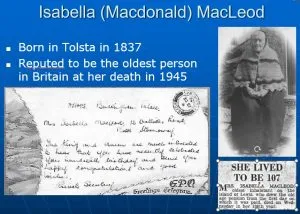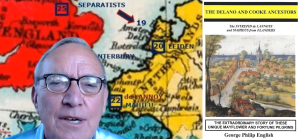Bringing your Ancestors from the Scottish to life. How many interesting stories are waiting to be found about your Scottish ancestors? This video explains to those with Scottish Ancestry how Research Through People go about researching their ancestors and bringing them to life, using examples from the Scottish Highlands & Islands. Discover your Scottish family lineage with professional genealogists and uncover a past that you never knew existed.
Scottish History, Heritage and Family Lineage
Are you going to RootsTech? People ask us to uncover the story of their ancestors from a country such as Scotland. But, of course, they probably came from certain parts of the country. In this video, we look at personal examples of ancestry from the Scottish Highlands & Islands, which is different in nature compared to the rest of Scotland. We will talk about historical and other aspects of the times that your ancestors lived through; and use examples of walking in your ancestors’ footsteps to illustrate what’s involved in the research.
Join the many others to have experienced family history uncovered by our professional genealogists Researching Ancestry and bringing history and your ancestors to life.
The History and Heritage of the Scottish Highlands & Islands

The Scottish Highlands and Islands are the northern half of Scotland. They’ve got very distinctive characteristics – majestic scenery, lochs and mountains. And a long history going back in time. The clans are a very distinctive feature of the Scottish people, and very strong in the Highlands.
Part of the history were the Highland Clearances in the 18th and 19th centuries when people were cleared off the land to make way for sheep. They left to go to England, to America and other parts of the world. And we often get their descendants getting in touch, asking us to research their ancestors.
The Munros from Ross and Cromarty

An example of the clans were the Munros. We traced them back from Fordyce in Banffshire to Tain in the County of Ross. Then to Kiltearn, just two miles from Foulis Castle, the old home of Clan Munro. Some people are blood descendant of the clan, but others gave their loyalty to the clan in order that they got protection.
The MacLeods from the Isle of Lewis
An example from the islands are the MacLeods of the Isle of Lewis off the west coast of Scotland. All of the MacLeod ancestors lived in the parish of Stornoway. The opportunities for work were very limited. A lot of people were fishermen; there were mills, and a whisky distillery. Even fewer opportunities for women – possibly the best hope was to find a man of some substance who they could marry.
25% of the inhabitant of Lewis were MacLeods. This MacLeod family lived in what was called a ‘black house’. Because of the soot from the fire that coated the thick stone walls.
Angus MacLeod was a fisherman. Six of them were out in the Minch when their ship capsized in a storm, and all six were drowned. Very tragic.

A very interesting ancestor was Isabella MacLeod. She was born in Tolsta in 1837. She was reportedly the oldest person in Britain when she died in 1945 at the age of 107! Very helpful when we can find a newspaper article about your ancestors.
The Beiths of Argyllshire and the Gilchrists of Sutherland

The Beiths were from Campbeltown of the west side of Scotland. Most Scots will tell you about the old song:
Campbeltown Loch, I wish you were whisky
I would drink you dry
Catherine Beith married Gillies Gilchrist from Helmsdale in Sutherland, way up in the north of the Highlands. In Helmsdale, there is a statue commemorating the Highland Clearances, with this family bidding farewell to their homeland before starting their tragic journey.
There are people from the Scottish Highlands & Islands all over the world. Many will be at RootsTech. This gives you a flavour of the Highlands & Islands and what your ancestors’ lives may have been like. You can watch our videos/blogs about Your Ancestors from Glasgow, Ayrshire, Scottish Borders, Scotland and many other places. All set for your Scottish ancestral journey? Then navigate directly to our contact page and fill in your research query.





